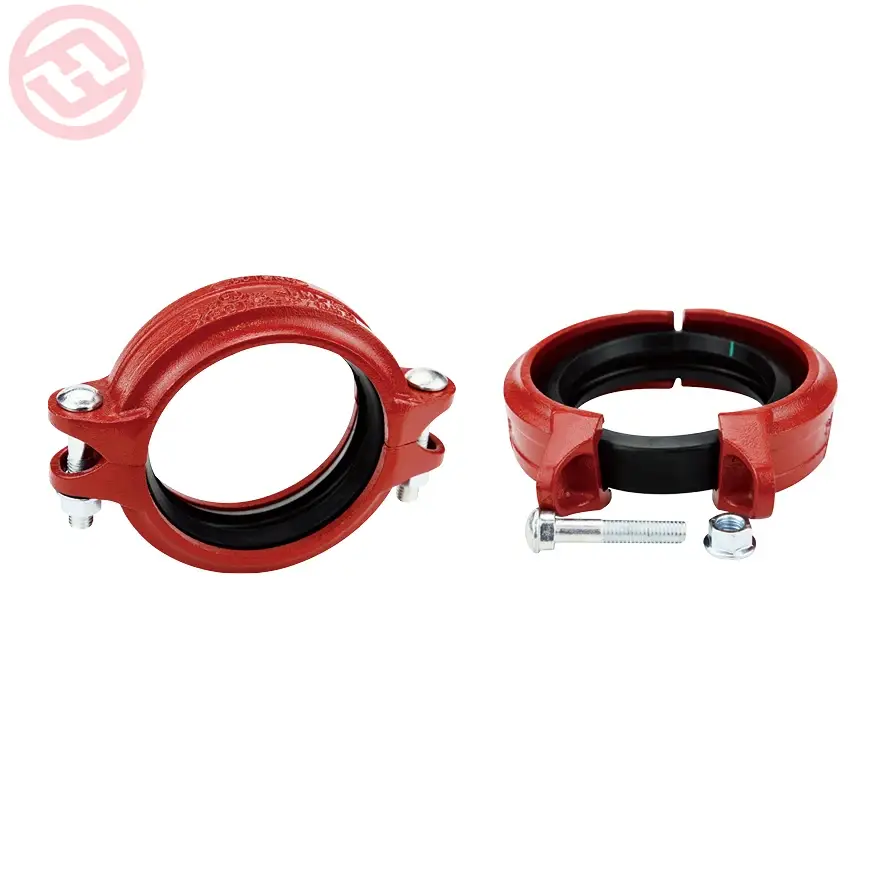Grooved joints, which are commonly used in industrial piping systems, can have a significant impact on the ease of maintenance.
Here are several ways in which grooved joints contribute to simplified maintenance in industrial systems:
- Accessibility and Disassembly:
- Grooved joints are designed to be easily accessible. The grooved coupling allows for straightforward disassembly without requiring extensive tools or specialized equipment. This ease of access facilitates quicker maintenance activities.
- Modularity and Flexibility:
- Grooved systems are modular, allowing for easy modifications or expansions. When maintenance is required, specific sections of the piping system can be easily disconnected and replaced without affecting the entire system. This modularity enhances system flexibility and simplifies maintenance planning.
- Reduced Downtime:
- Grooved joints enable faster disassembly and reassembly compared to traditional welded joints. This reduction in downtime is critical in industrial settings where minimizing production interruptions is essential for operational efficiency.
- No Hot Work Requirements:
- Unlike welded joints that often require hot work, grooved joints do not involve welding or flame cutting during installation or maintenance. This eliminates the need for hot work permits and associated safety precautions, simplifying the maintenance process.
- Ease of Inspection:
- Grooved joints allow for visual inspection of the joint integrity. Inspectors can easily assess the condition of the gasket and coupling, identifying potential issues without the need for disassembly. This simplifies routine inspections and preventative maintenance.
- Compatibility with Various Materials:
- Grooved systems are compatible with a wide range of materials, including steel, stainless steel, and ductile iron. This flexibility simplifies maintenance planning, as different sections of the system can be constructed using materials that best suit the specific application.
- Simple Gasket Replacement:
- Grooved joints typically use rubber gaskets to create a seal. When gaskets wear out or need replacement, it is a straightforward task to remove the coupling, replace the gasket, and reassemble the joint. This simplicity contributes to the ease of routine maintenance.
- Cost-Effective Repairs:
- The simplicity of disassembly and reassembly in grooved systems makes repairs more cost-effective. Maintenance teams can quickly address issues without the need for extensive labor or specialized skills, resulting in cost savings over the system’s lifecycle.
- Versatility in System Layouts:
- Grooved systems offer versatility in system layouts, allowing for changes and adjustments as needed. If maintenance requires reconfiguring the piping layout, grooved joints make it easier to modify the system without major disruptions.
- Corrosion Resistance:
- Many grooved joints are made from corrosion-resistant materials. This feature contributes to the longevity of the joints and reduces the frequency of maintenance related to corrosion issues, especially in challenging industrial environments.
- Seal Reliability:
- Grooved joints are designed to provide reliable seals. The gasket design and coupling mechanism contribute to leak-tight connections, minimizing the likelihood of fluid or gas leaks. grooved joint This reliability reduces the need for frequent maintenance related to seal failures.
- Tool-Free Installation and Removal:
- Grooved joints often feature tool-free installation and removal. The use of nuts and bolts for securing the coupling allows for manual disassembly without the need for specialized tools, enhancing the simplicity of maintenance tasks.
- Consistent Installation Quality:
- Grooved systems can be prefabricated, ensuring consistent installation quality across various joints. This standardization contributes to reliability and reduces the likelihood of maintenance issues arising from installation errors.
- Adaptability to Vibration:
- Grooved joints have a degree of flexibility that allows them to absorb vibration and movement in the system. This adaptability reduces stress on the joints and associated components, contributing to a longer service life and minimizing maintenance needs.
- User-Friendly Training:
- Training personnel for maintenance tasks on grooved joints is often straightforward. The simplicity of the system and the ease of assembly and disassembly make it easier for maintenance teams to quickly acquire the skills needed to work with grooved piping systems.
In summary, grooved joints contribute to the ease of maintenance in industrial systems by providing accessibility, modularity, reduced downtime, and simplicity in inspection, repair, and replacement tasks. These factors collectively enhance the overall efficiency and cost-effectiveness of maintaining industrial piping systems.
